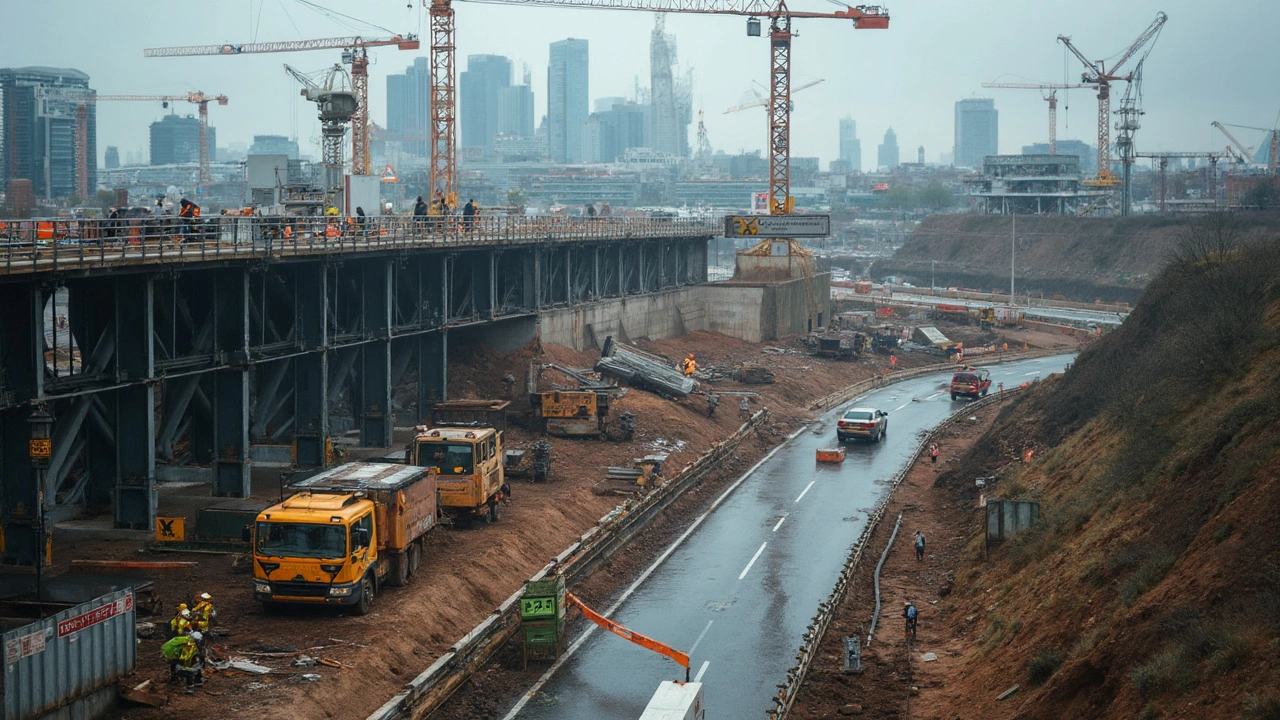Heavy Civil Construction: Real‑World Advice You Can Use Today
If you’re tackling a big civil project—whether it’s a new road base, a massive foundation, or a commercial roof—there’s a lot to keep straight. You need to know which materials hold up, how to spot problems early, and what the most cost‑effective fixes are. Below you’ll find practical pointers that cut through the jargon and help you stay on schedule and on budget.
Foundations: Spotting Issues Before They Spread
Cracks in walls or doors that won’t close are often the first sign that a foundation is struggling. Look for horizontal cracks, bulging walls, or uneven floors. When you see any of these, check the soil moisture; too much water can expand clay and push the slab up, while dry soil can cause shrinkage and pull it down. Simple drainage fixes—like adding French drains or regrading the yard—often stop the problem before you need costly underpinning.
If the damage is already visible, you have three main repair routes. Piering inserts concrete columns deep into stable ground, giving the structure a new anchor point. Underpinning spreads the load across a larger area, but it’s more invasive and pricey. Finally, slab lifting can raise a settled concrete floor using a grout mixture, which is quick and works well for minor settlement. Choose the method that matches the severity and your budget.
Roofing and Moisture: Keeping the Building Dry
A roof that looks solid from the ground can still leak in the attic. Inspect flashing around chimneys, vents, and skylights—these are common leak points. Replace cracked or missing shingles promptly; a small gap can let in enough water to cause mold growth in a matter of weeks.
When you’re budgeting for a new roof, ask contractors for a detailed breakdown. Labor, underlay, and disposal fees can add up fast, and a price tag that seems high might include premium materials that actually extend the roof’s life by 15‑20 years. If the quote feels too low, it could be cutting corners on ventilation, which leads to premature wear.
Beyond the roof, indoor air quality suffers from hidden mold. In new builds, inadequate vapor barriers or faulty HVAC systems trap moisture behind walls. Use a dehumidifier during the first few months, and run exhaust fans while showering or cooking. A quick visual check for any dark spots on walls and a musty smell are early warnings—address them right away with proper cleaning and, if needed, professional remediation.
Heavy civil projects also involve handling large volumes of material. Choose sustainable options like recycled aggregate for road bases or low‑VOC sealants for foundations. Not only do these choices reduce environmental impact, they often qualify for government incentives that shave a few thousand pounds off the total cost.
Finally, keep a simple log of every inspection, repair, and material delivery. When you have clear records, you can spot patterns—like recurring moisture issues in a particular season—and plan preventive work before a small problem becomes a big expense.
By staying alert to the signs, using the right repair method, and keeping thorough documentation, you’ll keep your heavy civil project stable, dry, and on track. Ready to put these tips into action? Grab a notebook, walk the site, and start checking the basics today.
Heavy Civil: What Really Counts in Commercial Construction
- Gavin Whitaker
- |
- |
- 0
Wondering what 'heavy civil' means in construction? This article breaks down exactly which projects qualify, like highways, bridges, and water treatment plants—plus why it matters for bidding, safety, and costs. Get practical tips to spot heavy civil work on job sites and learn why these projects have their own rules and challenges. Find out what sets them apart from regular commercial buildings, using plain and clear language. Anyone in the construction field or just plain curious will understand what’s really behind the term 'heavy civil.'
View more